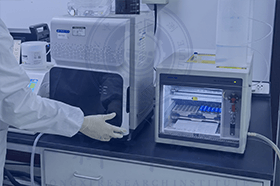检测信息(部分)
- 该类产品的主要用途是什么?
洗手液主要用于手部清洁、杀菌或消毒,适用于家庭、医疗机构、公共场所等场景,帮助减少病原微生物传播。
- 检测涵盖哪些产品类型?
检测范围包括普通洗手液、抗菌洗手液、免洗洗手液、医用消毒洗手液、儿童专用洗手液等不同分类产品。
- 检测的核心内容有哪些?
检测涵盖理化指标、微生物指标、毒理学安全性、有效成分含量及标签合规性等,确保产品符合国家标准或行业规范。
检测项目(部分)
pH值:衡量产品酸碱度,避免对皮肤造成刺激。
有效成分含量:确保杀菌或消毒成分达到宣称浓度。
总活性物含量:反映清洁能力的关键指标。
重金属残留:检测铅、砷等有害物质,保障使用安全。
甲醇含量:防止有毒溶剂超标。
菌落总数:评估产品自身微生物污染风险。
大肠菌群:检测致病菌污染情况。
金黄色葡萄球菌杀灭率:验证抗菌效果。
皮肤刺激性:通过实验评估产品对人体安全性。
稳定性测试:考察产品保质期内性状变化。
黏度:影响使用体验的物理特性。
总有效氯含量:针对含氯消毒成分的专项检测。
乙醇浓度:免洗类产品的核心效能参数。
荧光增白剂:筛查非法添加物质。
包装密封性:防止产品泄漏或污染。
净含量偏差:验证标签标注准确性。
起泡力:反映清洁效果的辅助指标。
腐蚀性测试:评估对金属或其他材质的损害风险。
低温稳定性:检测产品在寒冷环境下的性状保持能力。
毒理实验:通过动物或体外试验评估长期安全性。
检测范围(部分)
- 普通家用洗手液
- 医用外科手消毒液
- 抗菌抑菌洗手液
- 免洗速干型洗手液
- 儿童温和型洗手液
- 植物提取物配方洗手液
- 含氯己定洗手液
- 乙醇基免洗凝胶
- 季铵盐类消毒洗手液
- 泡沫型洗手液
- 甘油保湿型洗手液
- 敏感肌专用洗手液
- 食品加工行业专用洗手液
- 公共场所大容量装洗手液
- 便携式单片包装洗手液
- 抗病毒宣称洗手液
- 含天然精油成分洗手液
- 低敏无香型洗手液
- 医院ICU专用消毒液
- 含过氧化氢成分洗手液
检测仪器(部分)
- 高效液相色谱仪
- 气相色谱质谱联用仪
- 紫外可见分光光度计
- 原子吸收光谱仪
- 微生物培养箱
- 生物安全柜
- pH计
- 旋转粘度计
- 恒温恒湿试验箱
- 电子天平
检测标准(部分)
本部分适用于主要以表面活性剂和调理剂配置而成的,具有清洁及抗菌、抑菌特种功能的洗手液产品(不适用于非水洗型产品)。
本标准适用于以表面活性剂为有效成分配制的用于手部清洁的产品。
本标准不适用于非水洗型产品。
The procedure may be used to test the effectiveness of antimicrobial handwashing agents. The test formulations may be designed for frequent use to reduce the transient bacterial flora on hands.
1.1 This test method covers the determination of the effectiveness of antimicrobial handwashing agents for the reduction of transient microbial flora when used in a handwashing procedure.
1.2 A knowledge of microbiological techniques is required for these procedures.
1.3 In this test method metric units are used for all applications except for distance in which case inches are used and metric units follow in parentheses.
1.4 This test method may be used to evaluate topical antimicrobial handwash formulations.
1.5 Performance of this procedure requires the knowledge of regulations pertaining to the protection of human subjects.
This standard does not purport to address all of the safety concerns if any associated with its use. It is the responsibility of the user of this standard to establish appropriate safety and health practices and determine the applicability of regulatory limitations prior to use.
1.1 This test method is designed to determine the effectiveness of antimicrobial handwashing agents for the reduction of transient microbial flora when used in a handwashing procedure.
1.2 A knowledge of microbiological techniques is required for these procedures.
1.3 In this test method metric units are used for all applications except for distance in which case inches are used and metric units follow in parentheses.
1.4 This standard does not purport to address all of the safety concerns if any associated with its use. It is the responsibility of the user of this standard to establish appropriate safety and health practices and determine the applicability of regulatory limitations prior to use. For more specific precautionary statements see Note 1.
1.4 This method may be used to evaluate topical antimicrobial handwash formulations.
1.5 Performance of this procedure requires the knowledge of regulations pertaining to the protection of human subjects.
1.1 This test method covers determining the effectiveness of an antibacterial handwash for reducing the level of aerobic bacterial flora on the hands following an extended period of use.
1.2 A knowledge of microbiological techniques is required for these procedures.
1.3 In this test method metric units are used for all applications except for distance. In this case inches are used and metric units follow in parentheses.
1.4 Performance of this procedure requires the knowledge of regulations pertaining to the protection of human subjects. (Title 21 CFR Part 50).
This standard does not purport to address all of the safety concerns if any associated with its use. It is the responsibility of the user of this standard to establish appropriate safety and health practices and determine the applicability of regulatory limitations prior to use.
This in vivo procedure is designed to test the ability of hygienic handwash or handrub agents to eliminate fungal contamination from experimentally-contaminated hands. Since the two thumbpads and all eight fingerpads can be used in any given test it allows for the incorporation of an input control (two) control for viable cells of the test fungus remaining after the inoculum has been allowed to dry (two) fungal cells eliminated after treatment with a control or reference solution (two) and up to four replicates to assess the fungus-eliminating efficiency of the formulation under test. No more than 100 x00B5;L of the test fungal suspension is required to complete one test.
Whereas this test method is designed to work with fungi similar ASTM standards exist for testing against viruses (Test Method E 1838
Infectious microorganisms left on hands after washing can be reduced further by drying the washed hands with paper cloth or warm air (5). A step for the drying of fingerpads after exposure to the control or test solution therefore has not been included to avoid fungal removal by the drying process itself.
This test method is not meant for testing surgical hand scrubs or preoperative skin preps.
The level of contamination with viable fungi on each fingerpad after the drying of the inoculum should be at least 104 CFU so that it would permit the detection of up to a 4-log10 reduction in the viability titer of the test organism by a test formulation under the conditions of this test. This in itself does not represent the product performance criterion which may vary depending on the jurisdiction and the nature of the formulation being evaluated.
1.1 This test method is designed to assess the ability of hygienic handwash and handrub agents to reduce levels of fungal contamination on hands (3). This test method is not meant for use with surgical hand scrubs (Test Method E 1115
1.2 Performance of this procedure requires the knowledge of regulations pertaining to human experimentation.
1.3 The test method should be performed by persons with training in microbiology in facilities designed and equipped for work with infectious agents at biosafety level 2 (4).
1.4 The values stated in SI units are to be regarded as standard. No other units of measurement are included in this standard.
1.5 This standard does not purport to address all of the safety concerns if any associated with its use. It is the responsibility of the user of this standard to establish appropriate safety and health practices and determine the applicability of regulatory limitations prior to use.
This procedure has been designed to evaluate handwash products using a palmar surface only contamination method. This method is an alternative contamination procedure to that listed in Test Method E1174. The current contamination procedure in Test Method E1174 describes a standardized procedure for contaminating the entire hand palmar surface and back directly using a marker organism. The contamination procedure in Test Method E1174 does not necessarily represent real world hand contamination. During routine activities it is only the palmar surface comprising palms fingers and finger pads of the hands that becomes contaminated by contact with transient microorganisms. These microorganisms can then be transferred to food or objects. Methods to measure the amount of microorganisms transferred to food or objects can be found in Fischler et al and Fuls et al and will be developed into a future ASTM standard.
1.1 This test method covers the determination of the effectiveness of antimicrobial handwashing agents for the reduction of transient microbial flora when used in a handwashing procedure.
1.2 A knowledge of microbiological techniques is required for these procedures.
1.3 This test method may be used to evaluate topical antimicrobial handwash formulations.
1.4 Performance of this procedure requires the knowledge of regulations pertaining to the protection of human subjects.
1.5 In this test method SI units are used for all applications except for distance in which case inches are used and SI units follow in parentheses.
1.6 This standard does not purport to address all of the safety concerns if any associated with its use. It is the responsibility of the user of this standard to establish appropriate safety and health practices and determine the applicability of regulatory limitations prior to use. For more specific precautionary statements see 8.5.
1.1 This practice covers and is designed to determine the relative effectiveness of antimicrobial handwashing agents in reducing transient microorganisms using a controlled handwash.
1.2 Knowledge of microbiological techniques is required for these procedures.
1.3 This practice is used to evaluate topical antimicrobial handwashing formulations.
1.4 Performance of this procedure requires the knowledge of regulations pertaining to the protection of human subjects (21 CFR Parts 50 and 56).
1.5 The values stated in SI units are to be regarded as standard. No other units of measurement are included in this standard.
1.6 This standard does not purport to address all of the safety concerns if any associated with its use. It is the responsibility of the user of this standard to establish appropriate safety health and environmental practices and determine the applicability of regulatory limitations prior to use. For more specific precautionary statements see 8.1.
1.7 This international standard was developed in accordance with internationally recognized principles on standardization established in the Decision on Principles for the D
This in vivo procedure is designed to test the ability of hygienic handwash and handrub agents to reduce levels of selected infectious viruses from experimentally contaminated fingerpads of adults. Since the two thumbpads and all eight fingerpads can be used in any given test it allows for the incorporation of input virus control (two) virus remaining viable after the inoculum has been allowed to dry (two) virus eliminated after treatment with a control or reference solution (two) and up to four replicates to assess the virus-eliminating efficiency of the substance under test. No more than 100 x03BC;L of the virus suspension are required to complete one test. The results of testing with this test method may form the basis for further tests using a suitable whole-hand test protocol (for example Test Method E2011).
This test method is designed to be performed by a trained individual who is responsible for choosing the appropriate host system for the test virus and applying the techniques necessary for propagation and maintenance of host and test virus. For a reference text refer to Lennette et al (8).
Whereas the method described here relates to testing with viruses of human origin it can be readily adapted to work with animal pathogenic viruses as well as bacteriophages. Standard methods for working with bacteria (Test Method E2276) and fungi (Test Method E2613) are also available.
Infectious microorganisms left on hands after washing can be reduced further by drying the washed hands with paper cloth or warm air (9). A step for the drying of fingerpads after exposure to the control or test substance therefore has not been included to avoid virus removal by the drying process itself.
This test method is not meant for use with surgical hand scrubs or preoperative skin preps.
The level of viable virus on each fingerpad after the drying of the inoculum should not be less than 104 infectious units which would permit the detection of up to a 4 log10 reduction in the infectivity titer of the virus by the test substance under the conditions of this test method.
1.1 Human skin is not known to carry viruses as a part of its resident microbiota. Hands transiently contaminated with viruses can however act as vehicles for the spread of many types of viral infections. Hand hygiene is meant to reduce the load of viruses and other transient microorganisms on hands thereby reducing the risk of disease transmission. Such reductions in the virus load may be due to a combination of virus inactivation and mechanical removal of infectious virus from the skin.
1.2 This test method is designed to determine the comparative virus-eliminating effectiveness of microbicidal or non-microbicidal formulations. This test method is not meant for use with surgical hand scrubs or preoperative skin preps.
Note 18212;The test method should be performed by persons with training in virology in facilities designed and equipped for work with infectious agents at biosafety level 2 (6).
1.3 The values stated in SI units are to be regarded as standard. No other units of measurement are included in this standard.
1.4 This standard does not purport to address all of the safety concerns if any associated with its use. It is the responsibility of the user of this standard to establish appropriate safety and health practices and det......
The procedure should be used to test the degerming effectiveness of antimicrobial hand washing products used by health care personnel that are intended for frequent use and that are intended to reduce the level of contamination acquired through contact with contaminated objects or people.
Performance of these procedures requires the knowledge of regulations pertaining to the protection of human subjects (Ref 1).3
1.1 This test method can be used to determine the effectiveness of antimicrobial handwashing agents (including handrubs) in the reduction of transient bacterial flora with particular emphasis on the fingernail region.
1.2 A knowledge of microbiological techniques is required for these procedures.
This standard does not purport to address all of the safety concerns if any associated with its use. It is the responsibility of the user of this standard to establish appropriate safety and health practices and determine the applicability of regulatory limitations prior to use.
本标准适用于香皂、洗手液、沐浴剂等洗涤用品中三氯卡班含量的测定。
本标准适用于化妆品(膏霜、乳液、化妆水)和洗手液类产品中十一烯酸及其锌盐的测定。
本方法对十一烯酸及其锌盐的检出限为12mg/kg(0.0012%),定量限为40mg/kg(0.004%)(均以酸计)。
本部分适用于商场、购物中心、超市等购物场所及相关设施,具体用于公共信息导向系统中的位置标志、导向标志、信息索引标志、平面示意图、街区导向图、便携印刷品及其他信息载体中的导向要素的设计。
本标准适用于城市、乡村、旅游区和高谏公路服各区等新建、改建、扩建供社会公众使用的固定式公共厕所以及在公共场所内设置的公共卫生间的规划、设计、建造、卫生学评价。现有公共厕所、学校公共厕所、单位内部人员使用的公共厕所照执行。
本文件适用于旅游景区、景区道路沿线、旅游度假区、旅游街区、旅游集散中心、乡村旅游点等旅游活动区域和场所内主要为游客服务的公共厕所。公共图书馆、文化馆(站)、美术馆、博物馆等公共文化场所的公共厕所参照使用。

检测优势
检测资质(部分)
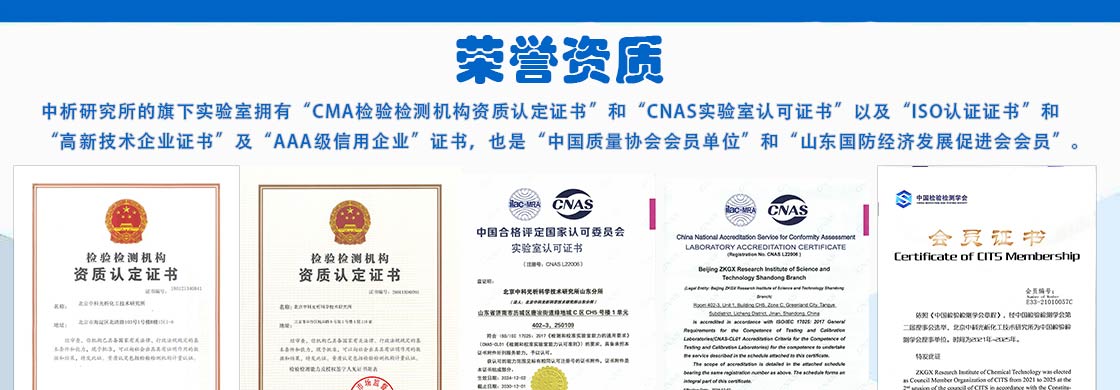
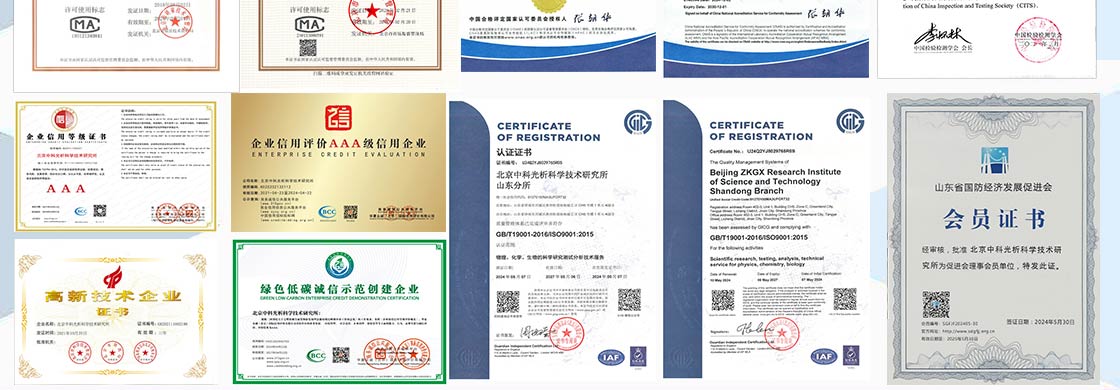
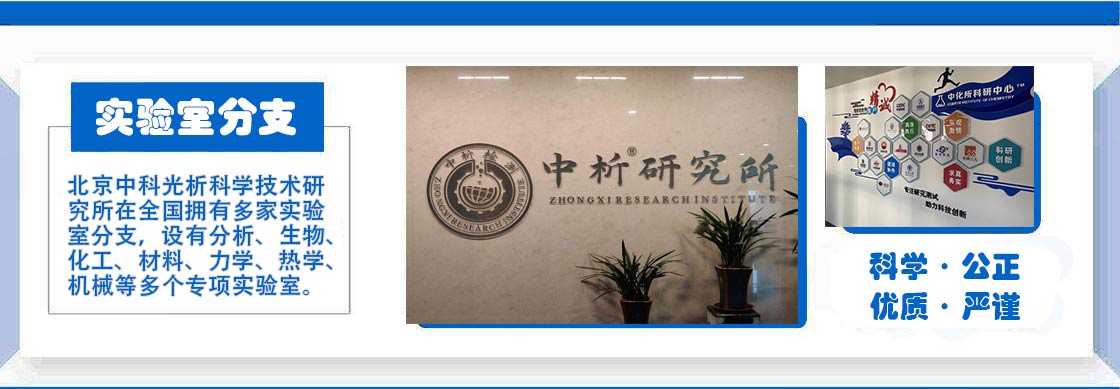
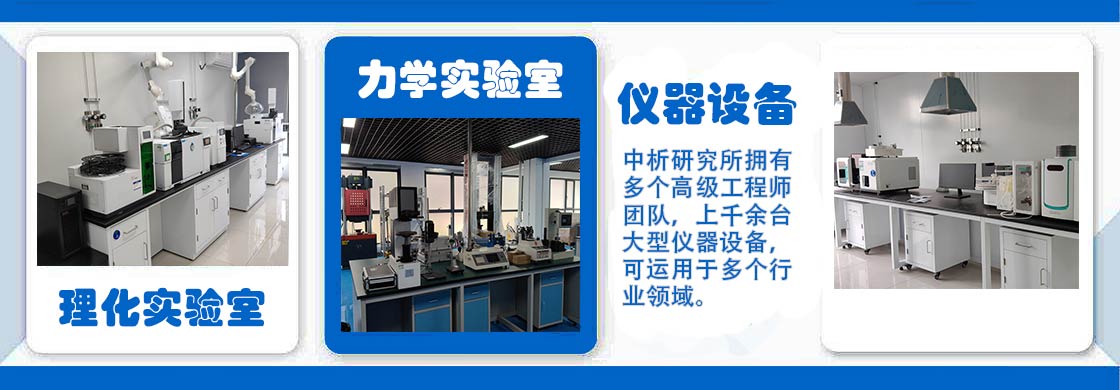
检测实验室(部分)



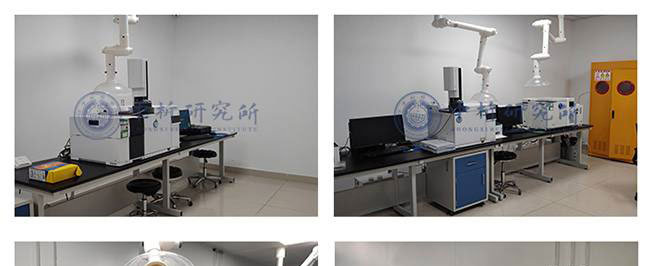
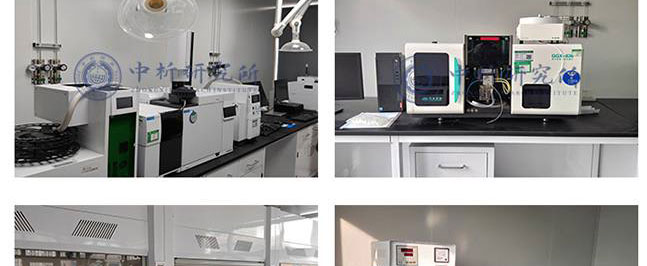
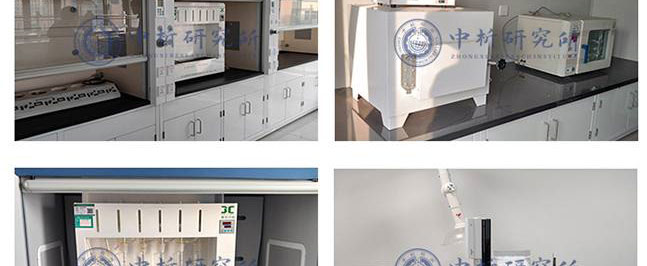
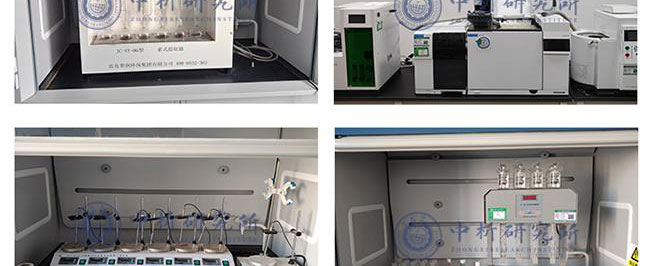
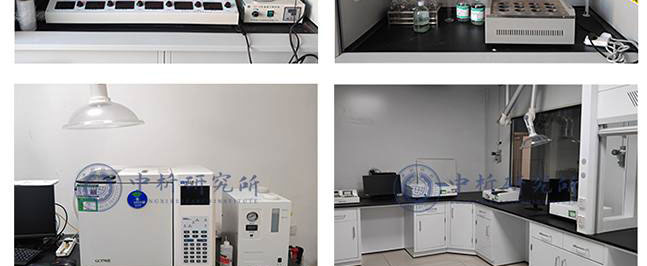
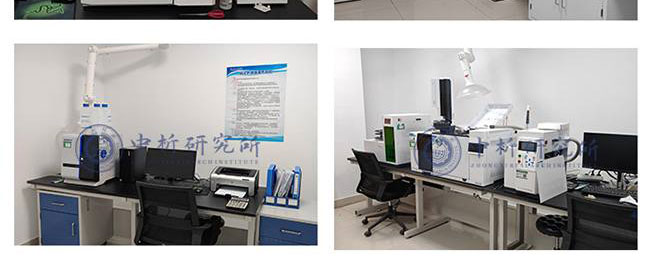
合作客户(部分)





检测报告作用
1、可以帮助生产商识别产品的潜在问题或缺陷,并及时改进生产工艺,保障产品的品质和安全性。
2、可以为生产商提供科学的数据,证明其产品符合国际、国家和地区相关标准和规定,从而增强产品的市场竞争力。
3、可以评估产品的质量和安全性,确保产品能够达到预期效果,同时减少潜在的健康和安全风险。
4、可以帮助生产商构建品牌形象,提高品牌信誉度,并促进产品的销售和市场推广。
5、可以确定性能和特性以及元素,例如力学性能、化学性质、物理性能、热学性能等,从而为产品设计、制造和使用提供参考。
6、可以评估产品是否含有有毒有害成分,以及是否符合环保要求,从而保障产品的安全性。
检测流程
1、中析研究所接受客户委托,为客户提供检测服务
2、客户可选择寄送样品或由我们的工程师进行采样,以确保样品的准确性和可靠性。
3、我们的工程师会对样品进行初步评估,并提供报价,以便客户了解检测成本。
4、双方将就检测项目进行详细沟通,并签署保密协议,以保证客户信息的保密性。在此基础上,我们将进行测试试验.
5、在检测过程中,我们将与客户进行密切沟通,以便随时调整测试方案,确保测试进度。
6、试验测试通常在7-15个工作日内完成,具体时间根据样品的类型和数量而定。
7、出具检测样品报告,以便客户了解测试结果和检测数据,为客户提供有力的支持和帮助。
以上为洗手液检测的检测内容,如需更多内容以及服务请联系在线工程师。








